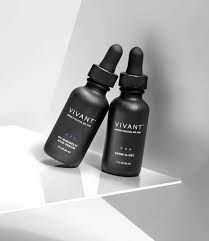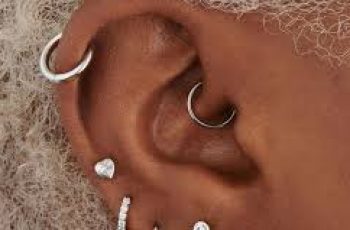Can I Use Mandelic Acid and Retinol at The Same Time?
There are some existing blog posts that focus on the best way of layering active ingredients to achieve your skin goals. However, there are some potent powerhouses that should be avoided to prevent the risk of irritation and negative side effects.
Yes, the truth is you can have too much of a good thing, so with that in mind, we will be drawing attention to how both ingredients work on the skin and answer the question, can you use mandelic acid and retinol at the same time?
What is Mandelic acid?
Derived from bitter almonds, mandelic acid is a chemical exfoliant and is a member of the AHA family.
Known as one of the gentlest exfoliants, those with sensitive skin can use mandelic acid due to its larger molecular size preventing it from penetrating too far into the skin, causing irritation.
Proven to have visibly reduce the appearance of hyperpigmentation, melasma, dark spots, sun damage, and other areas of uneven skin tone.
Can help manage acne flare-ups, unclog pores, dissolve blackheads, and regulate sebum production.
By ridding the skin of dead skin cell build-up, mandelic acid can reduce the appearance of fine lines and wrinkles. The skin appears firmer with more elasticity.
Is very compatible with other ingredients when used correctly in your existing skincare routine (more on this later)
Find out more about mandelic acid on our dedicated blog post.
What is Retinol?
A potent form of vitamin A with a variety of derivatives formulated into a few different products, from prescription strength to over the counter.
Increases the speed of the natural skin cell turnover, sloughing away dead skin cells and revealing a brighter, younger, glowing complexion.
Has a smaller molecular size meaning it can reach further down past the epidermis (the outer surface of the skin) and into the dermis.
Helps to boost the production of collagen and elastin creating a plumper, firmer, more youthful looking complexion.
Reduces the appearance of fine lines and wrinkles, whilst minimising the appearance of enlarged pores.
Combats signs of sun damage and areas of hyperpigmentation giving you an all-over even complexion.
There is more to learn about retinol, so do check out our blog post for more information.
Now we’ve had a little refresher on these powerhouse ingredients, let’s dive in to answering some questions about using mandelic acid and retinol.
What can you not mix with mandelic acid?
As I have already mentioned in the previous section, mandelic acid is one of the gentler AHAs meaning it is great to use for those with skin prone to sensitivity. As gentle as it may be, it is still a chemical exfoliant and it’s still an exfoliant and should not be layered with other actives that provide similar results. This can also be said when using retinol with mandelic acid due to the high potency of retinol causing an increased risk of irritation and negative reactions to the face.
This is because applying too much exfoliation to the skin will result in it becoming stripped of the vital oil and water it requires to remain healthy. With the lipid skin barrier lacking sebum will result in the skin over-producing oil as a way of remaining comfortable. This isn’t the case, as the excess sebum will result in a flare-up of acne, such as spots, blackheads, and other breakouts.
This in time will lead to a vicious cycle so to keep the balance and the skin in its healthiest state, here are some ways of using your mandelic acid and other actives without any unwanted side effects.
Alternate the acids you use. If there is a collection of acids in your skincare routine, pick and choose different formulas to use during your daily routine. This will not only avoid risk of irritation, but will keep your skin looking vibrant, glowing, and revived.
Use different acids during different routines. For example, opt to use a product containing mandelic acid during the day, following this with retinol during your evening skincare routine.
Ensure you leave about 10 to 15 minutes in between applications as this allows enough time for the skin’s pH levels to rebalance and prepare for the next step in your routine.
There are some examples of how to combine mandelic acid with other acids and retinol. Much like all skin ingredients, I would suggest consulting with a doctor or medical professional to ensure the formulas will deliver your desired results.
Can you use acids and retinol together?
Yes, you can, but only if it they are applied to the skin in the correct way. There is some research demonstrating that applying AHAs, and BHAs with retinol result in each ingredient becoming less effective when used simultaneously. This doesn’t mean your skincare routine shouldn’t include these potent powerhouses, but instead focus on applying them during the most effective stage in your routine, as described in the previous section.
When using acid and retinol in your daily skincare routine, you will also find it is important to team these actives with other hydrating one, such as hyaluronic acid, niacinamide, vitamin E and more, all of which are nourishing and help lock moisture into the skin.
Can I use mandelic acid every day?
Yes, you can, if you are using a product with a low percentage of the acid to avoid over-stimulation to the skin. You will also find that you can apply mandelic acid twice a day, especially if it is formulated into a cleanser or face wash, as these contain a low percentage of acid which requires the product to be rinsed off the skin.
With this short period of time for the face wash to work on the skin, you will be able to bypass any negative side effects and irritation making it a suitable product to use every day. This doesn’t however, mean you are able to avoid applying a daily sunscreen of SPF 30 and above to ensure the skin is fully protected from UV exposure. If you are wanting to use products, such as serums and face oils that contain higher percentage of the acid, you will need to build the tolerance of your skin opting to apply the products every other day to avoid irritation.
There you have some examples of how to use mandelic acid and retinol together, don’t forget if you had any further questions, you can come and find us on Instagram.
DQH Knowledge drop: In your 20s, your skin cell turnover decreases. (Cell turnover is a key component in keeping your skin youthful.) You know what else slows down? Your collagen production. Starting in your 20s, collagen decreases by about 1 percent per year. Should you want to prevent fine lines and wrinkles, start by eliminating behaviors that contribute to premature aging. “If it’s bad for you, it’s bad for your skin,” says dermatologist Michel Somenek.
“Cigarette smoking reduces blood flow to the skin and causes premature wrinkling and a dull skin texture. Making the repeated pursed motion to inhale can also cause smoker’s lines. Alcohol and recreational drugs are toxins for the skin that damage its cellular structure and DNA,” Somenek tells us. “The faster you eliminate vices while you are young, the better chance your skin and body have to recuperate.” Also, adopting an anti-aging routine in your 20s is key. After all, the best offense is a good defense. We spoke to Somenek and experts Joshua Ross and Audrey Kunin to find out more.
Keep reading for the best anti-aging products for your 20s, according to skincare professionals.
Sunscreen
“We all know that the sun is the number one cause of skin aging and starting the prevention in your 20s is very important,” Ross says. “The majority of your sun damage won’t start to appear until you’re in your 30s, so don’t wait until you see it surface or you’ll be behind the curve. Stay ahead of it with a good-quality zinc-based sunscreen worn daily.”
Farmacy Green Defense Daily Mineral Sunscreen
An invisible sunscreen with SPF 30, plus botanical extracts meant to protect skin with tons of antioxidants. Bonus: It’s clean and fine to use under makeup.
Bareminerals Complexion Rescue™ Tinted Moisturizer Broad Spectrum SPF 30
Although we recommend you use your SPF and moisturizer separately, we also understand moments when you don’t have time or energy for that extra step. For those times, this bareMinerals moisturizer is a great thing to have on hand.
Vitamin C Serum
“A great introduction to anti-aging is to start with a vitamin C serum in your morning skincare routine,” Ross says. “It’s a powerful antioxidant that will neutralize free radicals and brighten the skin.” He adds that it’s a great way to counteract the effects of the sun’s harmful rays, which, as previously mentioned, are among the biggest causes of premature aging.
Drunk Elephant C-Firma™ Vitamin C Day Serum
The Drunk Elephant C-Firma is a lightweight serum that promises to give skin a glow by combining the brightening powers of vitamin C with ferulic acid, l-ascorbic acid, and vitamin E. The included sodium hyaluronate is meant to replace hydration loss, so you shouldn’t have to deal with any irritation.
Sunday Riley C.E.O. Rapid Flash Brightening Serum
This potent serum is jam-packed with vitamin C (15 percent, to be exact), which means it’s a potential superstar at both brightening skin and dousing it in antioxidants.
Peptides
Using peptides on your skin has many benefits, says Somenek. “The skin barrier is what defends the body against pollution, UV rays, bacteria, and toxins. It can be damaged by several everyday factors. Using topical peptides aids in building a stronger barrier,” he says. “Peptides comprise elastic fibers, which are a type of protein. These fibers help to make skin appear taut and firm. Peptides can also help repair damaged skin, relieve inflammation, and even out skin tone. Some peptides can kill acne-causing bacteria that is common in 20-somethings.”
Kunin agrees, saying, “Peptides are an excellent entry point for supporting collagen.” She recommends looking for face and eye treatments that contain these collagen-boosting powerhouses.
Charlotte Tilbury Magic Eye Rescue Cream
This Charlotte Tilbury super-emollient eye cream has a base of coconut oil and shea butter (read: it’s incredibly hydrating). Botanicals plus peptides are meant to help reduce dark circles and boost collagen, respectively.
This creamy moisturizer serves up potent collagen-boosting peptides and pycnogenol, and antioxidant-rich vitamin C. “Instead of sitting on top of the skin, peptides penetrate the outer layer so they go deep. The ‘signals’ they send tell the cells to produce elastin and collagen, which are needed for youthful-looking skin,” explains Somenek.
At-Home Peel Pads
Remember that skin cell turnover fiasco we talked about earlier? One way to help support it is by exfoliating. “Exfoliation is important to help keep skin fresh and luminous,” Kunin says. She recommends using at-home peel pads as an easy and effective way to exfoliate.
“The goal in your 20s is to fight the slowing pace of cell turnover. It is wise to use products that gently exfoliate, yet still remove oil and other impurities. Products that have Alpha Hydroxy Acids (AHA) or Beta Hydroxy Acids (BHA) are a good choice.”
According to Somenek, you should only exfoliate two to three times a week. “People of all ages are guilty of over-exfoliating and that can be too much of a good thing,” he says.
Dermadoctor Kakadu C Intensive Vitamin C Peel Pad
A few swipes of this Derma Doctor powerful peel pad promise to leave your skin glowing and smooth, thanks to the seven (yes, seven) types of chemical exfoliants, including AHA and BHA. It also contains vitamin C via Kakadu plum extract for added brightening and antioxidant protection.
KEY INGREDIENTS Kakadu plum extract is sourced from the Kakadu plum, a fruit grown in northern Australia. It contains vitamin C, which restores the skin’s natural barrier, increases collagen production, and soothes irritation.
Dr. Dennis Gross Skincare Alpha Beta® Universal Daily Peel Pads
These are the gold standard of peel pads, with a cult following and over 900 five-star reviews on Sephora. They’re easy to use and contain a blend of anti-aging exfoliating acids.
Emollient Night Cream
“In your 20s, you need to start upping the hydration in your skincare routine. You may have been cautious of over-moisturizing because of acne in your teens, but as you enter your 20s, your skin transitions and becomes drier,” Ross says. “I recommend an emollient night cream added into your evening skincare regimen.”
“Twenty-somethings need to make sure that they are not using creams that will clog their pores and cause excess oil production,” says Somenek. Opt for non-comedogenic products.
Cerave Skin Renewing Night Cream
One great choice is the CeraVe Skin Renewing Night Cream, which is a non-comedogenic night cream that leaves skin soft and glowy. It combines the moisturizing powers of ceramides and hyaluronic acid.
RoC Retinol Correxion Max Hydration Creme
“The best night cream ingredients contain retinol, benzoyl peroxide, and/or salicylic acid or hyaluronic acid. The goal is to moisturize, yet remove excess oil,” says Somenek. This Roc Retinol Correxion cream fits the bill as it contains both hyaluronic acid and retinol so it promises to moisturize while also being non-comedogenic.



